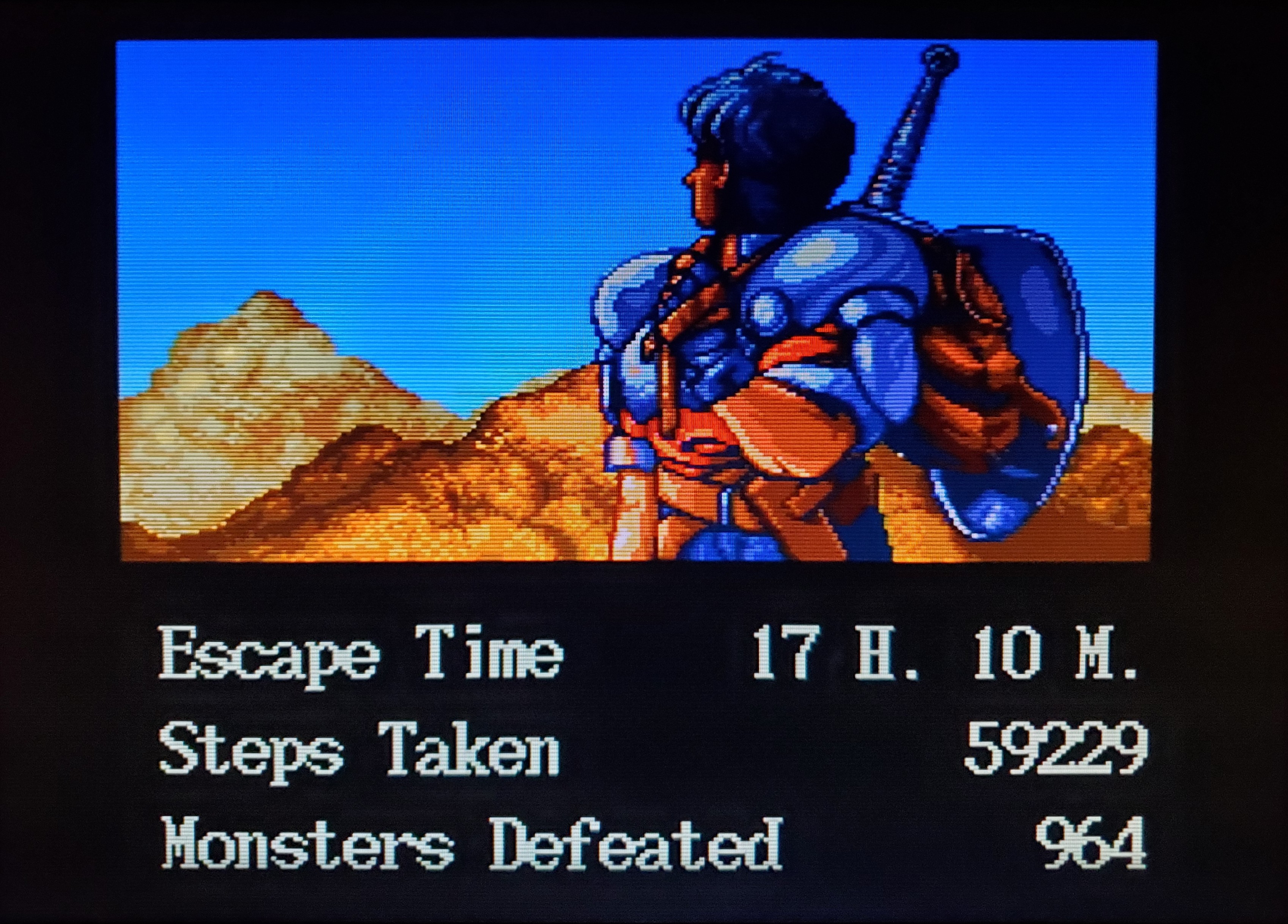
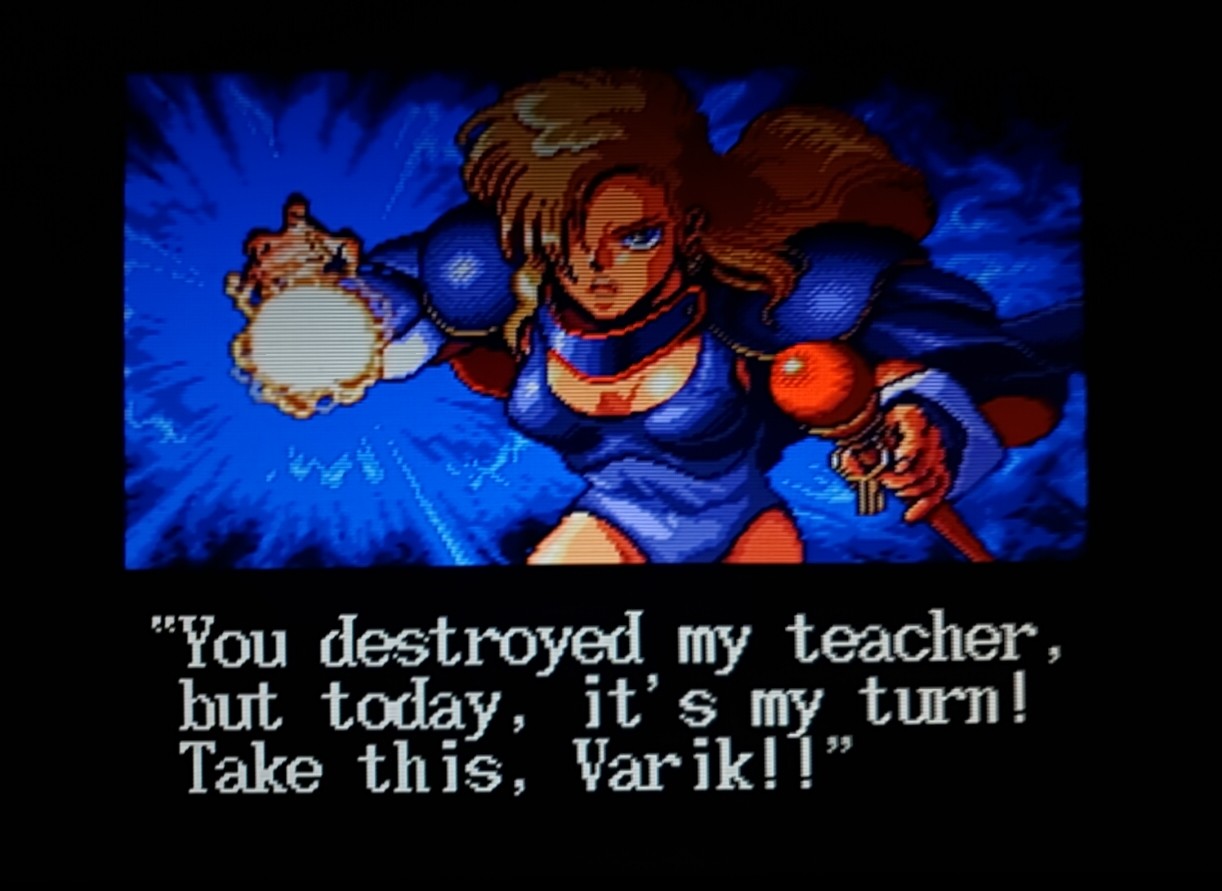
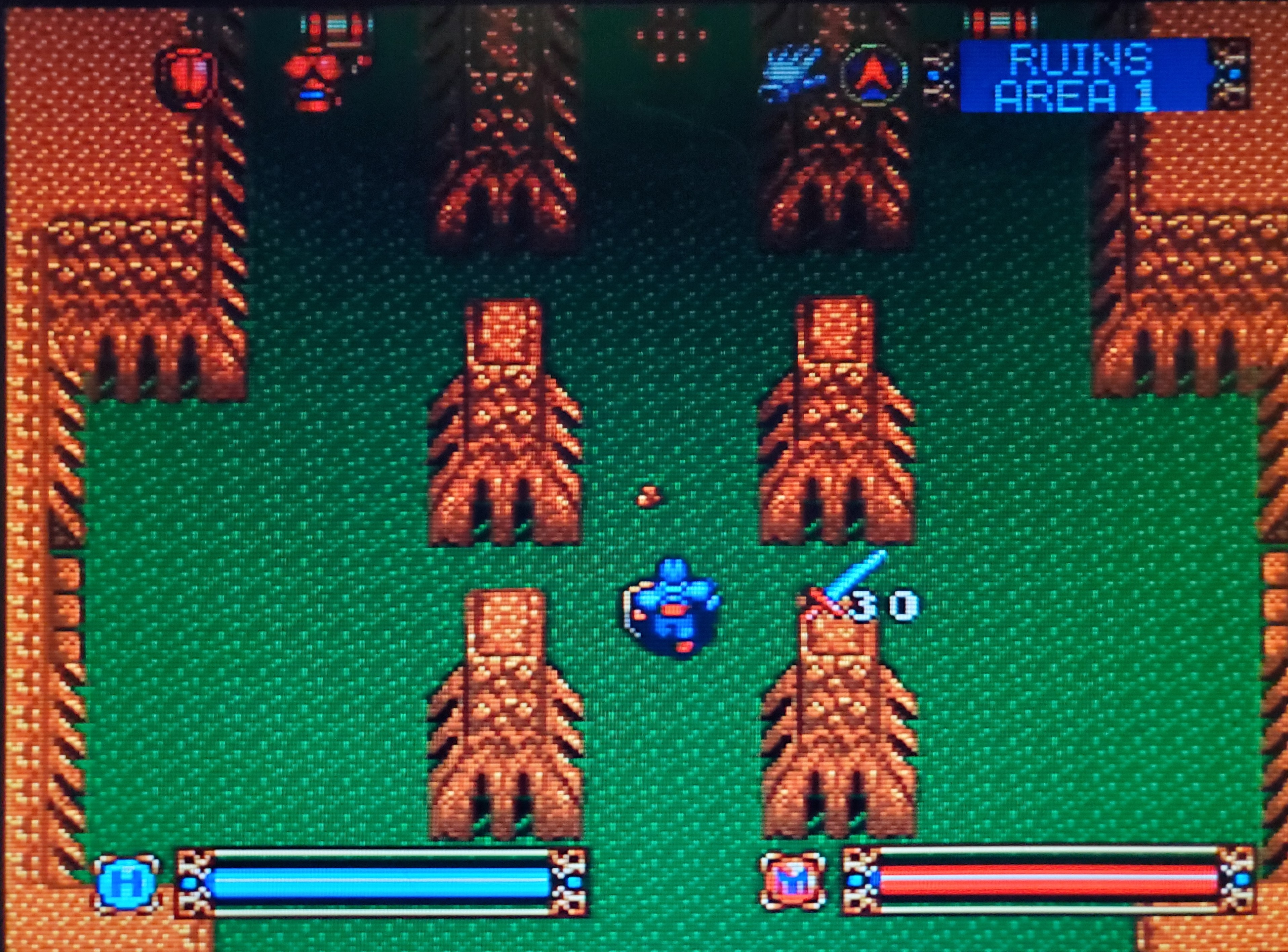
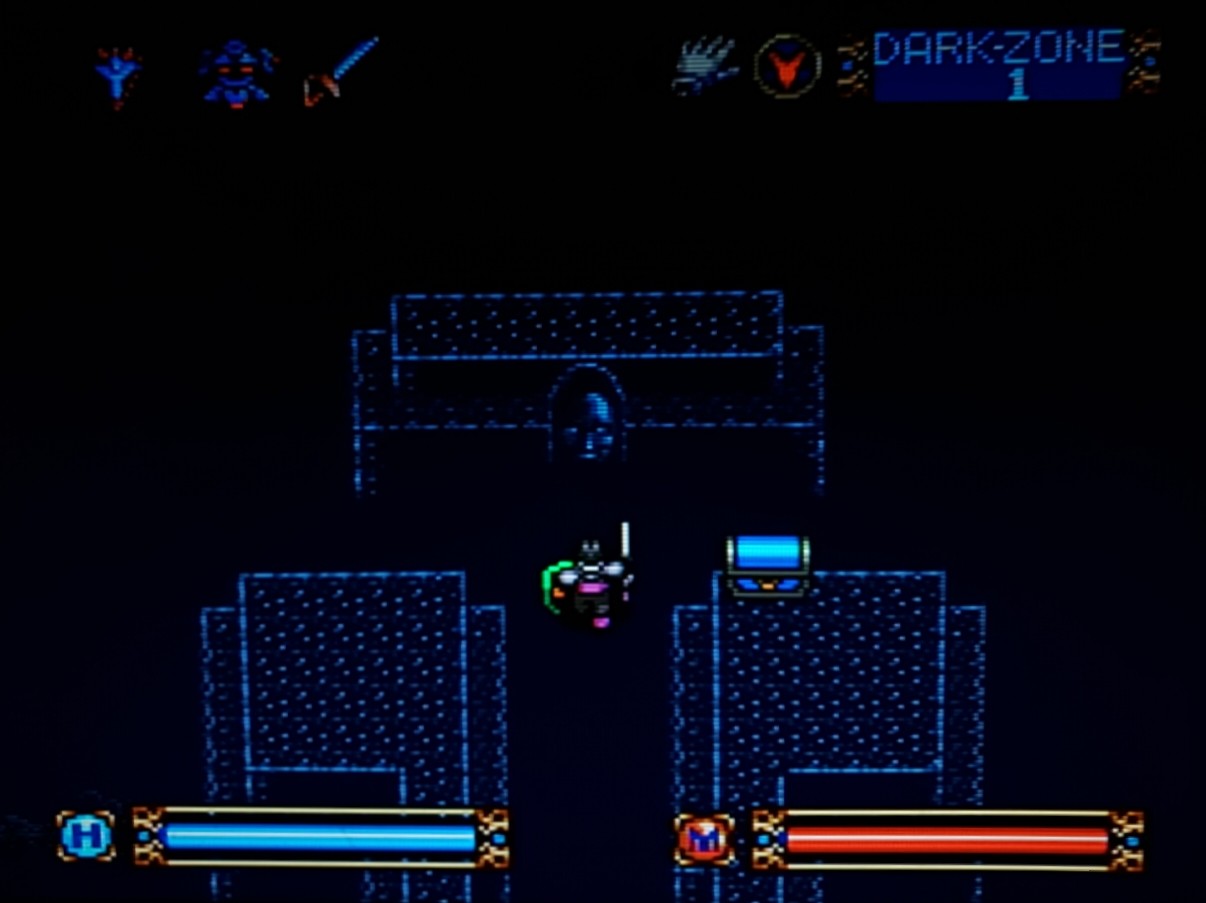
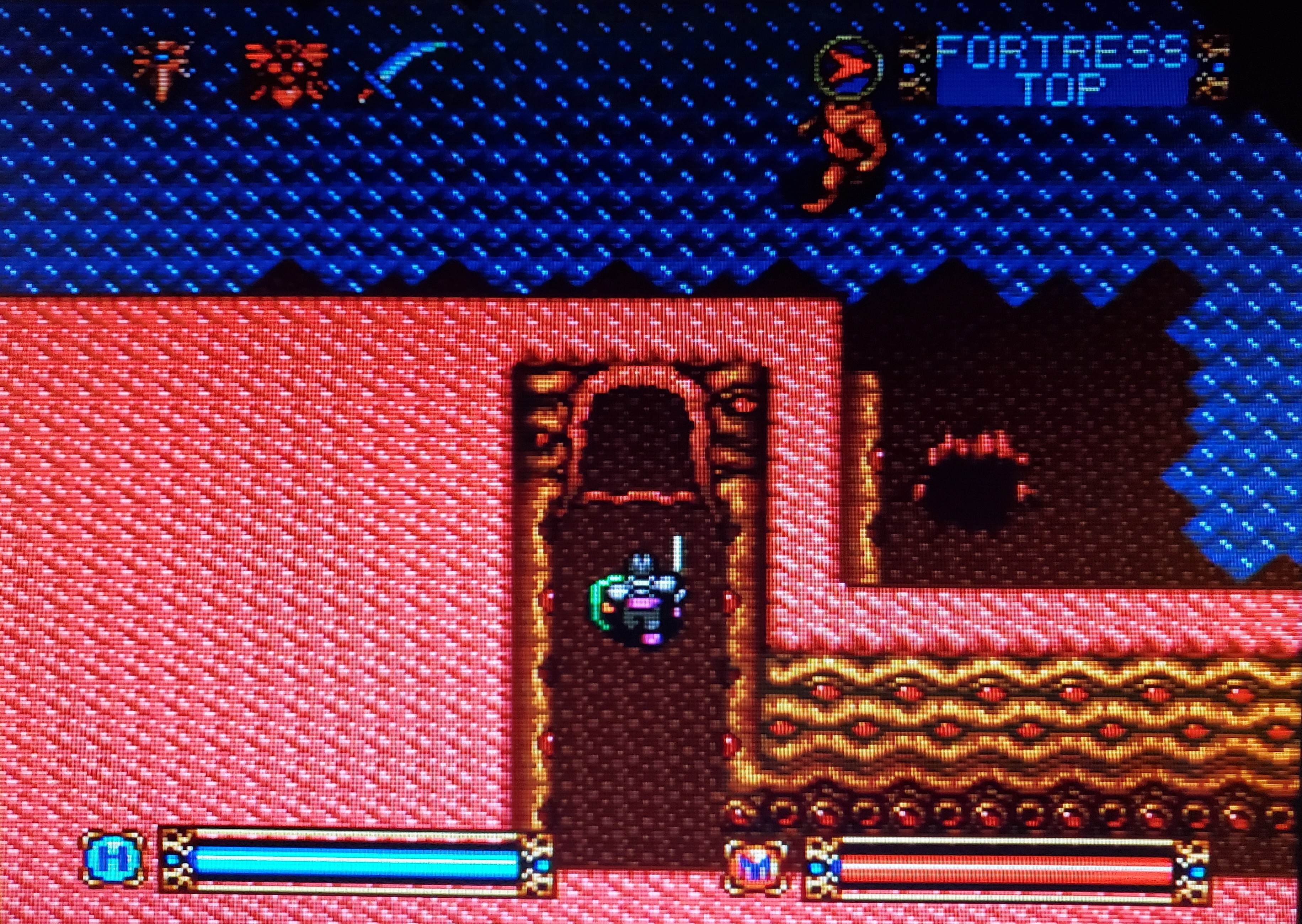
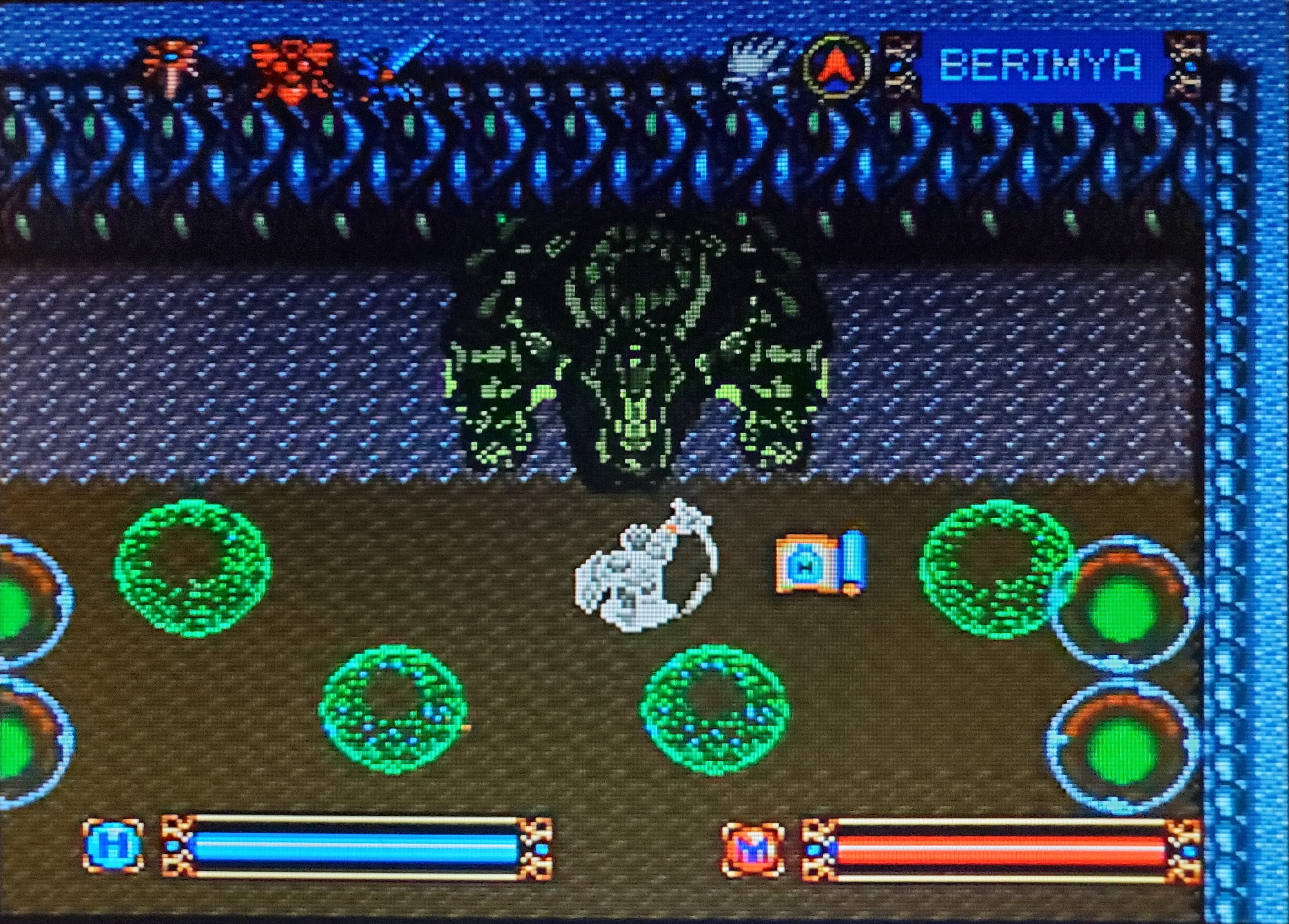
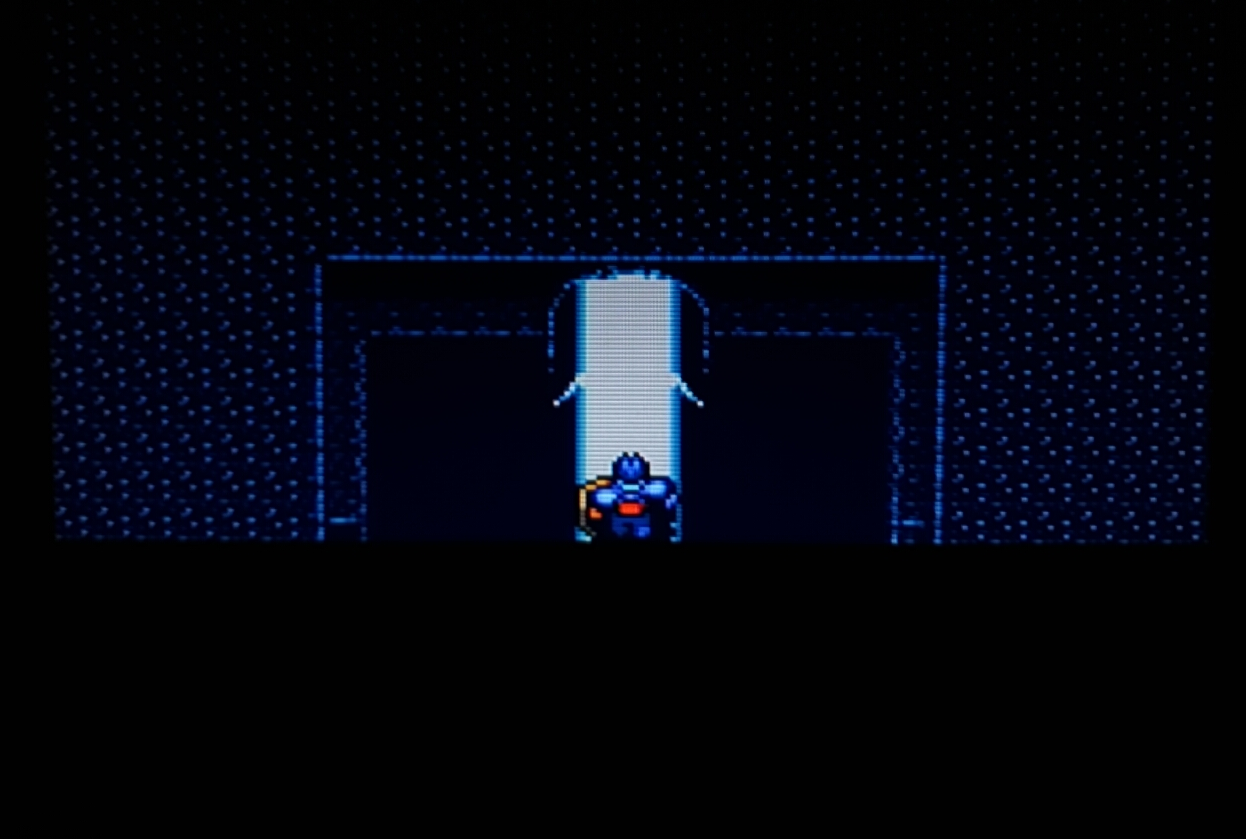
Brandish is my pick for the strangest action RPG on the Super Nintendo. That’s hardly what I anticipated going in, since nothing about its plot, gameplay goals, or developer pedigree hint that you’re about to be treated to something that arguably exceeds the slapstick Super Ninja Boy in sheer bizzaro factor. No, Brandish comes by its weirdness the last way you’d expect: Via a dizzying viewpoint gimmick I’m amazed ever made it out of the brainstorming phase.
Picture a typical overhead view fantasy dungeon crawler akin to Ys. Roam through mazes, slash up monsters to earn experience, grab keys and treasure, and keep an eye peeled for the all-important staircase to the next floor. Now, imagine that your character is permanently facing “up,” toward the top of the screen. Whenever you need to change direction, you don’t turn him, you turn everything else around him. The walls, the enemies, everything. And you don’t turn it smoothly like you would in, say, the bonus stages of Contra III, but in jarringly instantaneous 90-degree jumps. It’s awkward, disorienting, and too plain looking to come off flashy or cool. Worst of all, it’s truly needless, since it doesn’t lead to any noteworthy innovations on the level design or action fronts. The entire concept is harebrained in the extreme and you can find no shortage of other complaints about it online. Some allege that brushes with Brandish left them battling motion sickness, if you can believe that. Assuming you can keep your lunch down long enough to adapt, however, you may just discover one oddly addictive adventure.
The similarity I mentioned to the more famous Ys series is no coincidence, as Brandish also got its start as a Japanese home computer release by Nihon Falcom. The original PC-9801 and FM Towns versions debuted in 1991, with this Koei-produced port arriving three years later. Brandish follows silent protagonist Varik (Ares in Japan), a swordsman who’s being pursued for crimes unknown by Alexis (aka Dela), a scantily-clad bounty hunter sorceress. The two battle on the rim of a giant crater and both wind up falling in. As it turns out, this crater is home to the crumbling remains of a massive ancient city that was plunged underground by a magical cataclysm brought on by its wicked king. Varik must now endure a grueling 41-story climb back to the surface, weathering all manner of native hazards and staying one step ahead of Alexis to boot.
After the introductory cut scenes establishing all this wrap up, it’s just you and the dungeon. Although there are a handful of scattered NPCs to chat with, mostly merchants who’ve somehow managed to set up thriving business concerns in the bowels of a subterranean ruin, there are no traditional RPG towns or the like. It’s all one sprawling interconnected labyrinth filled with baddies, traps, and occasional secret passages concealed behind crumbling or illusory walls. Once every level or so, you’ll encounter a special puzzle room. These typically challenge you to press switches in a specific order, navigate a gauntlet of invisible teleportation tiles, or complete some other slightly more cerebral than usual task to move on. Bosses show up every five to ten levels and aren’t too spectacular or difficult for the most part. Many of them return later on as regular enemies.
Seeing as this is an RPG, Varik’s abilities don’t remain static. Achieving new experience levels increases his maximum health and magic points. His physical and magical damage outputs are based on how often you utilize those attack forms. Enemy strengths and weaknesses vary, so my advice would be to keep both as even as possible throughout. You certainly wouldn’t want to neglect your sword arm only to then be confronted by a powerful foe immune to magic. Oh, and be sure to acquire the Heal and Warp spells as soon as you possibly can. Believe me, you won’t regret it.
Melee combat is a serviceable enough affair, provided you’ve adjusted to the aforementioned kooky movement. One noteworthy wrinkle is that most swords you’ll find are limited to a set number of swings before they’ll permanently break. If that sounds awful, I wouldn’t fret. Fact is, you come across so many blades, along with “hardening potions” (available by prescription only, I’m sure) to repair them, that running out of armaments is never a serious concern. If worse comes to worse, there are a handful of unbreakable swords in the game. They’re not the strongest, but they get the job done.
With so much territory to cover and danger lurking around every corner, you’ll be pleased to know that Brandish is remarkably forgiving on the whole. You can save your progress any place, any time in the pause menu, and there’s an “emergency escape” option included to prevent you from trapping yourself if you happen to do so at an especially inopportune moment. Healing from damage is a cinch, too. Heal Magic is wonderfully efficient, you’re practically showered in health potions, and if all that somehow fails, you can always crawl into an enemy-free corner and engage rest mode to sleep it off. Anything to take some of the edge off that steep up-front learning curve is welcome in my book.
If I had to summarize Brandish in a single word, it’d be rough. The baffling decision to make simply moving your character the game’s primary challenge utterly fails to pay off. There’s effectively no story progression outside of the opening and closing cut scenes. Graphics are notably weak by the standards of the platform circa 1994 and the music, while fine in small doses, tends to get looped mercilessly for hours on end. I wouldn’t blame anyone for throwing in the towel after being subjected to ten back-to-back areas built from the same drab tan tiles and accompanied by the same droning song. When it came down to it, though, I didn’t throw in that towel. Instead, I acclimated to the wonky movement, made peace with the repetitive environments, and rode a mostly comfortable “just one more floor” groove all the way to the finish line. It feels like a stretch to call this one good, or even underrated, yet I won’t deny it worked on me. It successfully induced and then scratched that old school Pavlovian dungeon crawl itch. I can’t be alone in that, seeing as how it ultimately spawned a respectable three sequels and a 2009 PSP remake that’s widely held to be a vast improvement across the board. Perhaps I’ll check some of them out someday. I can’t imagine they get rougher than this.

I haven’t played through the SNES version due to that aforementioned roughness (compounded by the lack of a permanent mini-map on screen like the sequels or the original game), but the PSP remake is utterly fantastic. No instant rotation, so it plays much smoother, and you can really appreciate the level designs on tap. I’ve called it elsewhere a “designed rogue-like”, and it makes that genre much more palatable to me.
LikeLiked by 1 person
Maybe one day I’ll own a PSP again.
LikeLiked by 1 person
PSP emulation has also gotten very, very good, so it’s definitely worth checking some stuff out that way.
LikeLiked by 1 person